Probably Not to a Measurable Degree

The Essential Info
Aloe exhibits healing properties. However, scientific evidence to date indicates that Aloe is not likely to help reduce acne to a measurable degree.
When we dig into the research, we see that Aloe may fall short in the following areas:
Anti-inflammatory effects: The anti-inflammatory activity demonstrated by Aloe appears to be restricted to molecules that do not play a role in acne and, in fact, Aloe might even increase the production of inflammatory molecules that are involved in the formation of acne lesions.
Antibacterial effects: Aloe does not appear to have an antibacterial effect against the most common acne bacteria, called C. acnes.
Skin irritation: The evidence that Aloe can help with skin irritation is contradictory.
Wound healing effects: Acne lesions are, medically speaking, small wounds. While Aloe is widely spoken about as a soothing agent that can help heal wounds, the evidence that it improves wound healing is inconclusive.
___
On the other hand, Aloe does provide one activity that may help with acne:
Penetration-enhancing effects: There is some evidence that Aloe may help topical drugs, including acne treatments, penetrate more readily into the skin.
___
The Bottom Line: Quality Aloe products or fresh Aloe right from the plant may prove to be beneficial for some skin conditions, but acne is not one of the shining examples. Aloe also tends to be unstable and quickly degrade, so even if it did work well for acne, it can be difficult to find high-quality Aloe on the market.

The Science
- Aloe and Its Potential for Healing
- The Components of Aloe
- Studies on Aloe and Acne – Inconclusive
- Why Explore Aloe as an Acne Treatment?
- Why Is There So Little Conclusive Evidence?
- Aloe Mask – How To
Aloe and Its Potential for Healing

The Aloe plant has been used in traditional medicine for centuries. The flesh from the plant has been used to create gels, drinks, cosmetics, and as a folk remedy for the treatment of a wide range of illnesses.1,2,3,4
Aloe exhibits anti-inflammatory and antibacterial action, and may promote wound healing. It has been used to aid in the treatment of a variety of medical issues including wounds and injuries, bruises, allergic and parasitic skin conditions, cancerous lesions, gastrointestinal ulcers, and is also used to soothe the skin.2-4
Aloe is now integrated into Western medicine, as described in a recent publication in Biomedicine & Pharmacotherapy:
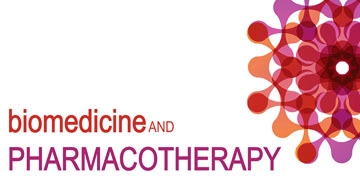
“Numerous…studies as well as clinical trials have confirmed the traditional uses of Aloe including wound healing…activities. These studies have also indicated new properties such as anti-diabetic, hypoglycemic, anti-cancer, antimicrobial, antiviral, antihyperlipidemic and anti-ulcer activities.”2
However, as we will see as we investigate Aloe’s potential role in the treatment of acne, the evidence is not as promising. The short story here is that acne-prone people are unlikely to derive much benefit from over-the-counter Aloe when it comes to acne.
The Components of Aloe
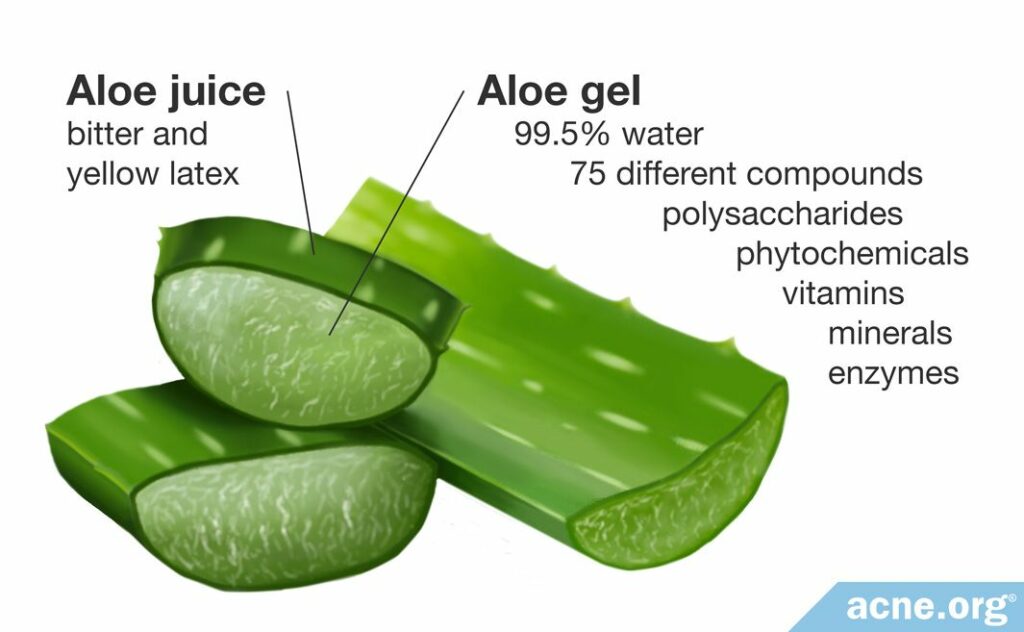
The most common strain of Aloe studied by medical researchers is Aloe vera.
The two Aloe vera products most commonly used in medicines and supplements are:
- Aloe gel (more commonly used): The interior of the succulent leaves
- Aloe juice (less commonly used): A bitter and yellow latex that is extracted from the outer leaves
Since Aloe gel is what is most commonly used, let’s focus on that.
Aloe gel is made up of over 99.5% water. Aside from water there are also over 75 different compounds, including polysaccharides (a specific kind of carbohydrate), vitamins, minerals, enzymes, and other phytochemicals.2
Because there are so many compounds in Aloe gel, its healing effects may be explained by the effect of all of Aloe’s components combined together, and not necessarily from just one compound in the plant.2,4
Studies on Aloe and Acne – Inconclusive
Four studies have tested Aloe as a treatment for acne. Three of these studies attempted to treat acne with topical Aloe, while the fourth tested whether drinking Aloe juice might improve acne.
Unfortunately, the results are inconclusive on the question of whether Aloe can benefit people with acne. Let’s take a quick look:
- Study 1 and 2 (Topical Aloe): These studies compared the efficacy of a topical treatment containing Aloe to an antibiotic gel. In both studies, the researchers found the topical Aloe treatment more effective at reducing acne than the topical antibiotic. However, in both studies, the topical Aloe product contained several other herbal remedies besides Aloe. In other words, we cannot be sure that Aloe itself is the reason why the patients experienced improvement in their acne.5,6
- Study 3 (Topical Aloe): This study tested topical Aloe gel on patients with mild-to-severe acne. In addition to applying Aloe to the skin, the researchers treated the patients with an ultrasound device intended to improve the absorption of Aloe into the skin. They also cleaned the patients’ skin with disinfectant before and after each Aloe treatment and applied a soft mask to the patients’ faces after the treatment to protect the skin from the external environment. The researchers found that two months of administering this treatment three times a week improved the patients’ acne. However, we cannot be sure to what extent Aloe itself was responsible for the improvement, since the treatment included so many other steps besides Aloe application.7
- Study 4 (Drinking Aloe): This study tested the efficacy of drinking Aloe juice on patients with acne.The patients experienced a slight improvement in acne lesions, but this improvement was too small to be conclusive. In other words, this slight improvement might have been due to random variation and not the Aloe treatment.8
Expand to reveal more details of these 4 studies
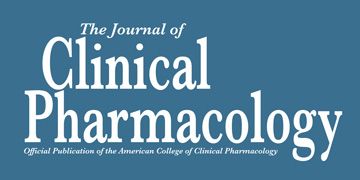
Study 1: This study was published in 2018 in The Journal of Clinical Pharmacology. Sixty patients with mild-to-moderate acne participated in the study. The researchers randomly divided the patients into three groups of 20. The first group received a topical cream containing 10% Aloe vera, 20% propolis, and 3% tea tree oil. The second group received 3% erythromycin cream, which is an antibiotic. The third group received a placebo cream, which means a cream containing no medicinal ingredients. The researchers evaluated the patients’ acne before the first treatment, and after 15 and 30 days of daily treatment. They found that acne improved the most in the patients who used the Aloe-containing cream.5
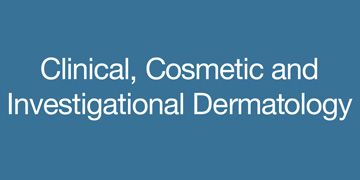
Study 2: The second study was published in 2019 in the journal Clinical, Cosmetic and Investigational Dermatology. Sixty patients with mild-to-moderate acne participated in the study. The researchers divided these patients into two groups of 30. The first group received a gel treatment containing Aloe barbadensis leaf extract, Garcinia mangostana peel extract, and Camellia sinensis (green tea) leaf extract. The second group received a 1% clindamycin gel, which is a topical antibiotic. After 14 days of twice-daily treatment, the researchers found the Aloe-containing gel more effective at reducing acne than the topical antibiotic.6
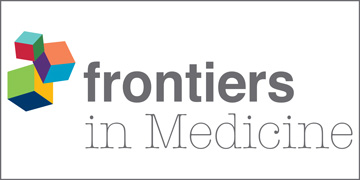
Study 3: The third study was published in 2021 in the journal Frontiers in Medicine. Sixty-four patients with mild-to-severe acne participated in the study. The researchers divided these patients into 2 groups: 40 patients received the Aloe gel treatment, and 24 patients received a placebo gel instead. The treatment procedure consisted of 4 steps:
- Cleaning the patients’ faces and applying a disinfectant
- Applying Aloe gel (or placebo gel) to the skin and treating the skin with an ultrasonic device for 10-15 minutes
- Applying a soft mask on top of the Aloe to the patients’ faces for 20-30 minutes
- Cleaning the patients’ faces again
This procedure was repeated 3 times a week for 8 weeks. The researchers evaluated the patients’ acne before and after the treatment period. They found that the number of acne lesions decreased after treatment in the patients treated with Aloe gel, but not in the patients treated with placebo gel. The authors concluded that Aloe is effective in treating acne, especially moderate acne.7 However, it’s not time to get excited about Aloe as a treatment for acne. The treatment procedure included several steps besides Aloe application, and these steps may have contributed to the improvement in acne.

Study 4: The third study was published in 2014 in the Asian Journal of Clinical Nutrition. Forty patients with mild-to-moderate acne participated in the study. The researchers divided these patients into two groups of 20. The first group drank an Aloe vera juice, while the second group drank a placebo juice (a similar juice lacking Aloe) once a day for 30 days. During this period, the number of acne lesions decreased slightly in the people who drank Aloe juice, but this improvement was too small to be statistically significant. In other words, it is impossible to say whether the patients experienced an improvement in acne due to the Aloe juice or simply due to random variation.8
To sum up, the studies conducted so far are inconclusive on whether Aloe can really help with acne. Still, let’s take a look at the reasons Aloe might be worth exploring as a potential acne remedy.
Why Explore Aloe as an Acne Treatment?
Aloe has five properties that are potentially relevant to acne:
- Inflammation: Acne is primarily an inflammatory disease and Aloe has some anti-inflammatory properties
- Bacteria: Acne can be aggravated by bacteria and Aloe has some antibacterial properties
- Skin irritation and dryness: People with acne tend to have irritated skin and Aloe may help calm the skin, but evidence is contradictory
- Wound healing: Acne lesions are essentially small wounds of the skin and Aloe speeds wound healing
- Penetration enhancement: Aloe may help topical acne medications penetrate into the skin
Since Aloe has potentially beneficial properties in some of these areas, it is logical to examine the role Aloe might play in treating acne. However, as we’ll see below, the promise of Aloe seems to fade when we look more closely at the data.
Let’s take a deeper dive now and see how Aloe affects each of these properties.
Aloe and Inflammation (Aloe Might Make Inflammation Worse)
Inflammation can be triggered by a number of chemicals in the body, called inflammatory mediators. As researchers from a study published in Phytomedicine explain:
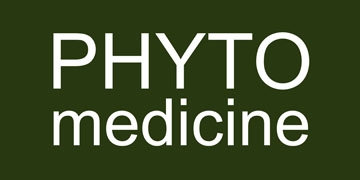
Scientists have confirmed Aloe as “an established anti-inflammatory drug” against some types of inflammatory mediators. However, results from the researchers’ 2003 study indicate that Aloe is ineffective against the inflammatory mediators that are most relevant to acne. In fact, their research showed that Aloe could increase the production of two specific inflammatory mediators called cytokines are known to aggravate acne.9
Aloe and Bacteria (Aloe Can’t Kill Acne Bacteria)
The antibacterial activity of Aloe has been proven against several types of bacteria, for example, a type of bacteria called Staphylococcus.2,3,10 However, Aloe may fall short when it comes to killing acne bacteria, which is called Cutibacterium acnes:

The same study in the journal Phytomedicine found that Aloe was ineffective in killing Cutibacterium acnes (C. acnes), a bacterial strain that aggravates acne by inducing inflammation. Because C. acnes is the most important bacteria in acne pathology, it is unlikely that Aloe’s antibacterial properties are relevant for acne.9
Aloe for Skin Irritation and Dryness (Evidence Is Conflicting)
Skin irritation, dryness, and scaling are common side effects of topical acne treatments. However, even without using acne treatments, acne patients typically already have what is called an impaired skin barrier function, which makes the skin lose more water and become dehydrated more easily than acne-free skin. Can the application of Aloe reduce the irritation and dry skin associated with acne and acne medication? The evidence to date is contradictory.11 While some studies find a small improvement in skin irritation and/or dryness with Aloe, others find Aloe ineffective in reducing these side effects of topical acne treatment.11-13
Expand to read details of studies
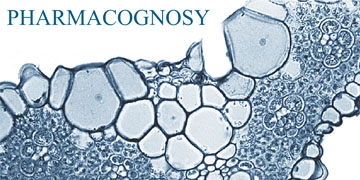
Pharmacognosy Magazine published a study in which researchers examined the role Aloe in skin hydration and skin irritation. They found that when participants used Aloe gel repeatedly, it dehydrated the skin compared to a placebo. They did, however, find that two strains of Aloe – Aloe vera and Aloe ferox – showed anti-redness activity similar to hydrocortisone, a common topical anti-inflammatory medication.12

In a study published in Skin Research and Technology, researchers applied freeze-dried Aloe vera extract on 20 female subjects twice daily for a period of 2 weeks. The researchers found that the treatment increased the water content of the outermost layer of the skin, but did not reduce water loss through the skin. In other words, the Aloe did not improve the skin barrier and did not moisturize the skin; rather, it solely added moisture to the surface of the skin for a short period of time.13
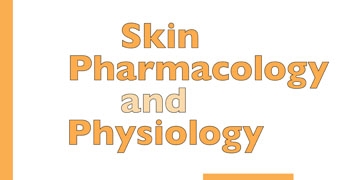
Another study, published in 2008 in Skin Pharmacology and Physiology, showed Aloe gel to be ineffective in reducing the inflammation associated with UV irritation of the skin. UV irritation is similar to sunburn and is relevant to acne since topical acne treatments may increase susceptibility to sunburn. In this study of 40 individuals, Aloe gel reduced skin irritation better than a placebo, but not as well as a conventional anti-inflammatory cream.11
Aloe and Wound Healing (Evidence Is Inconclusive)
The wound healing process is important to acne. Acne lesions are essentially skin wounds, and slow healing of acne wounds can lead to scars and post-inflammatory hyperpigmentation (dark/red spots).
Medical practitioners have used Aloe for centuries to promote wound healing. Aloe gel contains several components that scientists know can accelerate wound healing, including glucomannan, vitamin E, vitamin C, and amino acids.14-16
While some studies have shown that Aloe can improve wound healing, a review of the evidence to date shows mixed results and suggests that more research is necessary.2,14,15
Expand to read details of evidence
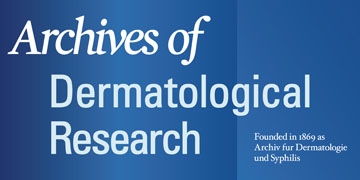
For example, reviews of 7 wound-healing studies involving a total of 347 patients were published in Archives of Dermatological Research and BioMed Research International in 2015 and concluded that further high-quality trials, preferably using standardized treatment settings, are necessary to better understand the impact of Aloe on wound healing.14,15
Aloe and Penetration Enhancement (Aloe Is Probably Beneficial)
One study has shown that Aloe can increase the effectiveness of other topical medications by improving their ability to be absorbed into the skin.17
Can Aloe also improve the effectiveness of topical acne treatments specifically? Two studies suggest that it might. In these studies, adding Aloe to a topical treatment regimen increased the treatment’s efficacy.1,18
Expand to read details of studies
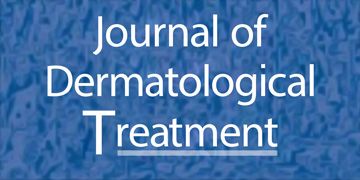
One study published in the Journal of Dermatological Treatment examined combinations of Aloe and topical retinoids among 60 subjects with mild to moderate acne. They found that the combination of Aloe gel and topical retinoids was slightly more effective in reducing acne lesions, but the addition of Aloe did not reduce the side effects of the medication.18
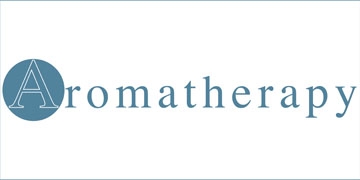
Another study published in the International Journal of Aromatherapy examined a combination treatment of Aloe and Ocimum gratissimum oil, a plant-based oil that has anti-acne properties. The study involved 84 acne patients and found that the efficacy of the Ocimum oil was increased with the addition of Aloe gel and that the Ocimum/Aloe combination was superior to clindamycin, an antibiotic that is also anti-inflammatory.1
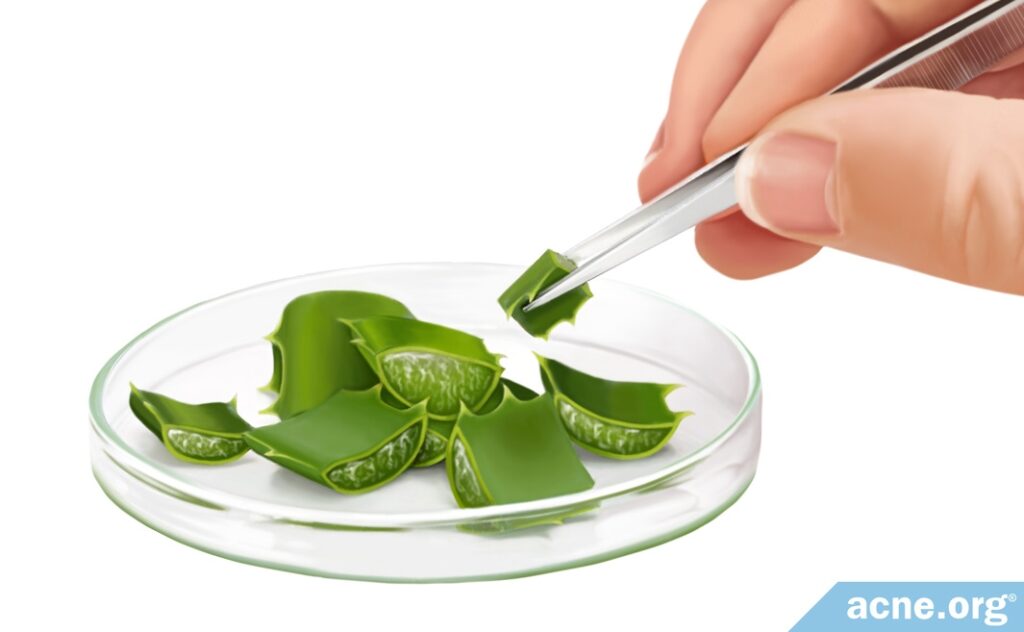
Why Is There So Little Conclusive Evidence?
The research around the effectiveness of Aloe, particularly regarding skin irritation and wound healing, is inconclusive. Some studies have shown benefits to using Aloe and some have shown it to be ineffective.
The differences in Aloe formulations and the instability of the polysaccharides found in Aloe gel may explain the contradictory data. As researchers from a 2008 study published in the journal Molecules explain:
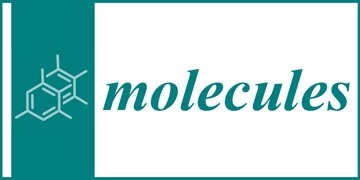
“…these conflicting results could be due to the use of plants from different locations with variations in their chemical composition and also because of different isolation techniques that were used to extract compounds from the Aloe leaf pulp…Furthermore, the polysaccharides found in Aloe gel are not stable, especially under stress conditions such as heat, the presence of acid and enzymatic activities.“3
If researchers can adopt a standardized method for producing Aloe gel products that avoid degradation of the unstable polysaccharides in the gel, it may be possible to achieve more consistent study results.3 But for the time being, based on what we can gather from existing data, Aloe most likely does not hold great promise in acne treatment.
Aloe Mask – How To:
If you would like to try adding an Aloe vera mask to your daily regimen, follow these simple instructions:
- Cleanse your skin using your bare hands and a mild facial cleanser. Do not use soap.
- Gently pat dry with a towel. Physical irritation of the skin makes acne worse, so stay ultra-gentle.
- Mash Aloe vera gel (store-bought 100% pure Aloe vera gel, or taken directly from the plant) and a few drops of fresh lemon juice together in your hands.
- Very gently apply to the skin, avoiding eye areas. Stay exceedingly gentle and don’t scrub.
- Leave the mask on for 15 minutes.
- Rinse off the Aloe mask and gently pat dry. You can now apply other products if you wish.
Remember to stay realistic about results. It is possible that if you first apply Aloe in this manner and then immediately apply a topical acne treatment, the topical acne treatment may penetrate better. However, Aloe on its own is unlikely to help much with acne.
References
- Orafidiya, L. O. et al. The effect of aloe vera gel on the anti-acne properties of the essential oil of Ocimum gratissimum Linn leaf – A preliminary clinical investigation. Int. J. Aromather. 14, 15 – 21 (2004). https://www.researchgate.net/profile/Ejaife_Agbani/publication/238635246_The_effect_of_Aloe_vera_gel_on_the_anti-acne_properties_of_the_essential_oil_of_Ocimum_gratissimum_Linn_leaf-a_preliminary_clinical_investigation/links/5b06efbd4585157f870b35d6/The-effect-of-Aloe-vera-gel-on-the-anti-acne-properties-of-the-essential-oil-of-Ocimum-gratissimum-Linn-leaf-a-preliminary-clinical-investigation.pdf?origin=publication_detail
- Akaberi, M., Sobhani, Z., Javadi, B., Sahebkar, A. & Emami, S. A. Therapeutic effects of Aloe spp. in traditional and modern medicine: A review. Biomed. Pharmacother. 84, 759 – 772 (2016). https://www.ncbi.nlm.nih.gov/pubmed/27716590
- Hamman, J. H. Composition and applications of Aloe vera leaf gel. Molecules 13, 1599 – 1616 (2008). https://www.ncbi.nlm.nih.gov/pubmed/18794775
- Singab, A. N. B., El-Hefnawy, H. M., Esmat, A., Gad, H. A. & Nazeam, J. A. A systemic review on Aloe arborescens pharmacological profile: biological activities and pilot clinical trials. Phyther. Res. 29, 1858 – 1867 (2015). https://www.ncbi.nlm.nih.gov/pubmed/26768148
- Mazzarello, V., Donadu, M. G., Ferrari, M., Piga, G., Usai, D., Zanetti, S. & Sotgiu, M.A. Treatment of acne with a combination of propolis, tea tree oil, and Aloe vera compared to erythromycin cream: two double-blind investigations. Clin Pharmacol. 10, 175-181 (2018). https://www.ncbi.nlm.nih.gov/pubmed/30588129
- Waranuch, N., Phimnuan, P., Yakaew, S., Nakyai, W., Grandmottet, F., Onlom, C., Srivilai, J. & Viyoch, J. Antiacne and antiblotch activities of a formulated combination of Aloe barbadensis leaf powder, Garcinia mangostana peel extract, and Camellia sinensis leaf extract. Clin Cosmet Investig Dermatol. 12, 383-391 (2019). https://www.ncbi.nlm.nih.gov/pubmed/31239743
- Zhong, H., Li, X., Zhang, W., Shen, X., Lu, Y. & Li, H. Efficacy of a new non-drug acne therapy: Aloe vera gel combined with ultrasound and soft mask for the treatment of mild to severe facial acne. Front Med (Lausanne). 8, 662640 (2021). https://pubmed.ncbi.nlm.nih.gov/34095172/
- Forest, J. M. & Rafikhah, N. Aloe vera juice and acne vulgaris: A placebo-controlled study. Asian J. Clin. Nutr. 6, 29-34 (2014). https://scialert.net/abstract/?doi=ajcn.2014.29.34
- Jain, A. & Basal, E. Inhibition of Propionibacterium acnes-induced mediators. Phytomedicine 10, 34 – 38 (2003). https://www.ncbi.nlm.nih.gov/pubmed/12622461
- Chellathurai, B. J., Anburose, R., Alyami, M. H., Sellappan, M., Bayan, M. F., Chandrasekaran, B., Chidambaram, K. & Rahamathulla, M. Development of a polyherbal topical gel for the treatment of acne. Gels. 9, 163-177 (2023). https://pubmed.ncbi.nlm.nih.gov/36826332/
- Reuter, J. et al. Investigation of the anti-inflammatory potential of Aloe vera gel (97.5%) in the ultraviolet erythema test. Skin Pharmacol. Physiol. 21, 106 – 110 (2008). https://www.ncbi.nlm.nih.gov/pubmed/18253066
- Fox, L. T. et al. In Vivo skin hydration and anti-erythema effects of Aloe vera, Aloe ferox and Aloe marlothii gel materials after single and multiple applications. Pharmacogn. Mag. 10, S392 – 403 (2014). https://www.ncbi.nlm.nih.gov/pubmed/24991119
- Dal’Belo, S. E., Rigo Gaspar, L. R. & Maia Campos, P. M. Moisturizing effect of cosmetic formulations containing Aloe vera extract in different concentrations assessed by skin bioengineering techniques. Ski. Res. Technol. 12, 241 – 246 (2006). https://www.ncbi.nlm.nih.gov/pubmed/17026654
- Sidgwick, G. P., McGeorge, D. & Bayat, A. A comprehensive evidence-based review on the role of topicals and dressings in the management of skin scarring. Arch. Dermatol. Res. 307, 461 – 477 (2015). https://www.ncbi.nlm.nih.gov/pubmed/26044054
- Hashemi, S. A., Madani, S. A. & Abediankenari, S. The review on properties of Aloe vera in healing of cutaneous wounds. Biomed Res. Int. 2015, 1 – 7 (2015). https://www.hindawi.com/journals/bmri/2015/714216/
- Liang, J., Cui, L., Li, J., Guan, S., Zhang, K. & Li, J. Aloe vera: A medicinal plant used in skin wound healing. Tissue Eng Part B Rev. 27, 455-474 (2021). https://pubmed.ncbi.nlm.nih.gov/33066720/
- Cole, L. & Heard, C. Skin permeation enhancement potential of Aloe vera and a proposed mechanism of action based upon size exclusion and pull effect. Int. J. Pharm. 333, 10 – 16 (2007). https://www.ncbi.nlm.nih.gov/pubmed/17088033
- Hajheydari, Z., Saeedi, M., Morteza-Semnani, K. & Soltani, A. Effect of Aloe vera topical gel combined with tretinoin in treatment of mild and moderate acne vulgaris: a randomized, double-blind, prospective trial. J. Dermatolog. Treat. 25, 123 – 129 (2014). https://www.ncbi.nlm.nih.gov/pubmed/23336746
The post Can Aloe Help Acne? appeared first on Acne.org.
